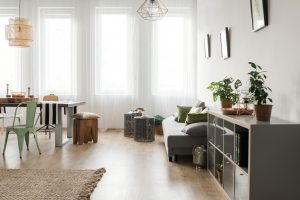With or without online classes, every student needs a dedicated study space at home. Living room coffee tables and dining tables don’t count. If you won’t work in those spaces because of the distractions around, then a student also feels the same way.
Sadly, many students aren’t as lucky to have a quiet study space at home. Instead, they study wherever they can lay down their books. Sometimes, they’d also stay in a library, which is much better and helpful for their concentration. But now that most students are having classes remotely because of COVID-19, libraries and other public areas are out of their options now.
If your child is struggling with their grades, ask yourself where you let them study. Their bedrooms may be good enough, considering their separation from the noisier spaces, but if you want to keep them in sight, and thus make them study in the dining room, for example, then that may be the reason behind their low grades.
Parents should note that good grades don’t come from brilliance alone. Often, it results from the combination of wit, motivation, and an effective learning environment. Therefore, if you don’t give them a proper study space, they are one factor short of achieving stellar marks.
Now that you’ve been informed about that, here are the rest of the things you need to know about study spaces:
Physical Environment Affects Student Performance
Research suggests that a student’s physical environment can affect their academic progress by up to 25%. Color, classroom organization, cleanliness, adequate supplies, and sufficient lighting can enhance their learning experience and boost their achievements. On the contrary, packed classrooms often lead to lower achievements and poorer disposition.
Ideally, students should be given 2 to 4 feet of personal space in a classroom. In addition, they should be granted the chance to create or modify their physical environment. For example, putting up art on the walls, or partaking in the physical dynamics of their classroom. Such acts give them a sense of empowerment and community, increasing their motivation in turn.
At home, it’s not much different. They may not have classmates there, but the things around them, such as the TV, kitchen appliances, and other household stuff, pose a distraction too. Not to mention the noise you or the other family members make. Alternatively, if you give them a quieter and more private place to study, their focus will improve, and they’ll feel more in control.

The Effects of a Peaceful Study Space
Aside from providing silence and better concentration, a dedicated study space also keeps a student organized. It prevents them from making a mess of their papers on the dining table or living room. Instead, they can keep their stuff in drawers or shelves.
A proper study space also makes them realize the importance of studying. Every time you take them into that room, they’ll immediately understand that schoolwork matters, and that focusing on it promises rewards. But they can only reap this benefit if you’re involved in their education. Don’t just lock them in there; try to help with their homework and projects, too. Maybe you can also discuss difficult topics with them. Simply put, make their study space a representation of how much you care for their academic success.
How to Create an Inspiring Study Space
You don’t have to spend a ton to create an inspiring study space. In fact, their bedroom will suffice. Just put a desk in a corner, and add ample storage units.
If not their bedroom, a good alternative would be the attic, an unused closet, the basement, or a converted outbuilding. The design doesn’t have to be stylish, but if you’re feeling a bit more creative, have your kid help you in conceptualizing the space.
But before deciding on an aesthetic, consider your budget and the comfort level first. If you’re converting an outbuilding or remodeling any spare space, your expenses can run high. Hence, stick to affordable but high-quality materials, such as low-maintenance vinyl floors, and low-cost furniture and light fixtures.
Get design inspiration from timeless trends. Some of which include earthen tones, abundant natural light, neutral colors, and minimalist elements. It’s important to keep the design streamlined and clean because the space will accumulate clutter over time. Students just have a lot of stuff.
Incorporate your child’s interests in the design too. Just because it’s a study space doesn’t mean it cannot look fun. The key to evoking feelings of inspiration, after all, is looking at the things you love. So even if you have to stick posters of your kid’s favorite pop star, so be it, because maybe, it’s the one that’ll pave the way for their future career in music.
When students learn the value of schoolwork, they’re going to grow up as responsible adults who respect working hours. They’ll also learn how to create an effective working environment for themselves, and be so productive that they can have fun as hard as they work.


















